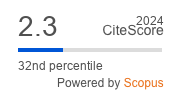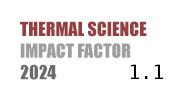THERMAL SCIENCE
International Scientific Journal
Authors of this Paper
External Links
REVEALING AND MINIMIZING HIDDEN ENERGY LOSSES IN HYDRAULIC LINES OF MOBILE MACHINERY
ABSTRACT
In a mobile material handling system powered by hydraulic drives, abnormally high line pressures were observed during operation, raising concerns about energy losses and inefficiencies in the hydraulic circuit design. To quantify the actual power consumed by hydraulic motors vs. the power lost due to line friction, a comprehensive measurement and simulation study was conducted. Pressure sensors (minimes test points) were installed at the inlet and outlet of each hydraulic motor to collect real-time pressure data. Losses were categorized into two main components: internal motor losses and line friction losses. An Excel-based tool was developed to calculate power losses [kW], and a MATLSIMULINK model was constructed to simulate pressure drops across the system, including components such as elbows, reducers, and fittings. Results indicated that frictional losses in the hydraulic lines accounted for nearly 50% of the total power drawn by the motors. Although the original line design adhered to standard velocity-based guidelines, Reynolds number analysis revealed a transitional to turbulent flow regime, contributing significantly to energy loss. Simulation of different internal diameters demonstrated that increasing the line size from 1/2"-5/8" in a critical segment reduced the associated power loss from 4-0.8 kW - a reduction of over 80%. Overall, approximately 7 kW of hydraulic power was recovered from a 55 kW engine, enabling the redirection of surplus energy to auxiliary hydraulic functions and improving overall fuel efficiency.
KEYWORDS
hydraulic line losses, pressure drop, SIMULINK modeling, energy recovery, Reynolds number, mobile machinery
PAPER SUBMITTED: 2024-11-14
PAPER REVISED: 2025-02-14
PAPER ACCEPTED: 2025-05-08
PUBLISHED ONLINE: 2025-09-26
DOI REFERENCE: https://doi.org/10.2298/TSCI2504061B
CITATION EXPORT: view in browser or download as text file
PDF VERSION [DOWNLOAD]
2025 Society of Thermal Engineers of Serbia. Published by the Vinča Institute of Nuclear Sciences, National Institute of the Republic of Serbia, Belgrade, Serbia. This article is an open access article distributed under the terms and conditions of the Creative Commons Attribution-NonCommercial-NoDerivs 4.0 International licence

